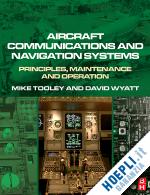
Questo prodotto usufruisce delle SPEDIZIONI GRATIS
selezionando l'opzione Corriere Veloce in fase di ordine.
Pagabile anche con Carta della cultura giovani e del merito, 18App Bonus Cultura e Carta del Docente
Mike Tooley has over 30 years of teaching electronic principles, electronics and avionics to engineers and technicians, previously as Head of Department of Engineering and Vice Principal at Brooklands College in Surrey, UK, and currently works as a consultant and freelance technical author.
David Wyatt has over 45 years’ experience in the aviation industry, including Head of Airworthiness at Gama Aviation, and an FE lecturer in avionics engineering. David is co-author in the aircraft engineering book series and has written BTEC National specifications.











Il sito utilizza cookie ed altri strumenti di tracciamento che raccolgono informazioni dal dispositivo dell’utente. Oltre ai cookie tecnici ed analitici aggregati, strettamente necessari per il funzionamento di questo sito web, previo consenso dell’utente possono essere installati cookie di profilazione e marketing e cookie dei social media. Cliccando su “Accetto tutti i cookie” saranno attivate tutte le categorie di cookie. Per accettare solo deterninate categorie di cookie, cliccare invece su “Impostazioni cookie”. Chiudendo il banner o continuando a navigare saranno installati solo cookie tecnici. Per maggiori dettagli, consultare la Cookie Policy.